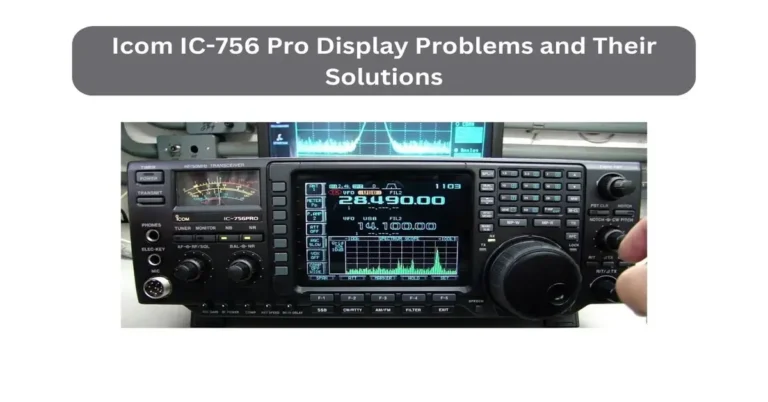History and Evolution of Ham Radio
Ham radio, also known as amateur radio, has been an integral part of global communication for over a century. From its early beginnings as a hobby for radio enthusiasts, ham radio has evolved into a vital tool for emergency communication, scientific experimentation, and even space exploration. In this article, we will explore the fascinating history and evolution of ham radio, from its origins to its present-day use.
Ham radio is a term used to describe the use of amateur radio equipment to communicate with other amateur radio operators around the world. This type of communication is conducted over a range of frequencies and is a popular hobby for many individuals interested in technology and communication. Ham radio also plays a vital role in emergency communication, scientific experimentation, and space exploration.
Early Developments in Radio Communication
The history of radio communication dates back to the late 1800s when scientists and inventors began experimenting with the transmission of radio waves. In 1895, Italian inventor Guglielmo Marconi successfully transmitted a radio signal over a distance of 1.5 miles. This groundbreaking achievement paved the way for the development of modern radio communication technology.
The Emergence of Ham Radio
The term “ham” was originally used as a derogatory term to describe amateur radio operators. However, in the early 1900s, the term was adopted by radio enthusiasts as a badge of honor. In 1914, the American Radio Relay League (ARRL) was established, which helped to formalize the hobby of ham radio and provide a framework for communication between operators.
The Evolution of Ham Radio Technology
Over the years, ham radio technology has evolved significantly. In the early days of ham radio, operators used simple equipment to transmit and receive signals. However, with the development of new technologies, such as single-sideband modulation and digital signal processing, ham radio equipment has become more advanced and sophisticated.
Ham Radio in Emergencies
One of the most important uses of ham radio is in emergency communication. During disasters such as hurricanes, earthquakes, and floods, traditional communication networks may be disrupted, leaving people without access to essential services. Ham radio operators can provide a vital lifeline by transmitting and receiving messages to and from affected areas.
Ham Radio in Scientific Experimentation
Ham radio has also played a significant role in scientific experimentation. Amateur radio operators have used their equipment to conduct experiments in areas such as meteorology, geophysics, and even space science. For example, in 1961, ham radio operators were able to detect the first signals from the Soviet Union’s Venera 1 spacecraft.
Ham Radio and Space Exploration
Ham radio has played a vital role in space exploration. In 1961, astronaut Alan Shepard brought a ham radio aboard the Freedom 7 spacecraft and became the first person to operate a ham radio in space. Since then, ham radio has been used on numerous space missions, including the International Space Station.
The Future of Ham Radio
The future of ham radio looks bright. Despite the proliferation of modern communication technologies, ham radio remains a popular hobby, with millions of operators around the world. As technology continues to evolve, so too will ham radio, with new developments in software-defined radios, digital modes, and satellite
Common Questions: FAQs
What is the difference between ham radio and regular radio?
Ham radio is operated by amateur radio operators, while regular radio is operated by licensed broadcasters. Ham radio is also more versatile and can operate on a wider range of frequencies.
Do you need a license to operate ham radio?
Yes, you need a license to operate ham radio. The licensing process involves passing an exam that tests your knowledge of radio operation and regulations.
What frequencies do ham radio operators use?
Ham radio operators use a range of frequencies allocated by the International Telecommunication Union (ITU) for amateur radio use. These frequencies vary depending on the mode of operation and the location of the operator.
Can ham radio be used for emergency communication?
Yes, ham radio is often used for emergency communication when traditional communication networks are disrupted. Ham radio operators can provide a vital lifeline during disasters and emergencies.
What is the future of ham radio?
The future of ham radio looks bright, with new developments in technology such as software-defined radios, digital modes, and satellite communication. Ham radio is likely to remain a popular hobby and a vital tool for emergency communication, scientific experimentation, and space exploration.
Conclusion
Ham radio has a rich history that spans over a century, from its early beginnings as a hobby for radio enthusiasts to its present-day use as a vital tool for emergency communication, scientific experimentation, and space exploration. The evolution of ham radio technology has been remarkable, and it has remained a popular hobby despite the proliferation of modern communication technologies. Ham radio operators around the world continue to play a crucial role in emergency communication, scientific experimentation, and space exploration, and the future of ham radio looks bright.



